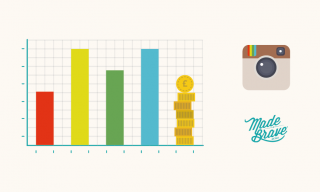Here’s how to use marketing automation to make things easier for your customers (and your team!).
When it comes to buyer journeys, no two are the same—but with machine learning and automation, that buyer journey can be super targeted and make things easier and more personalised for the potential customer. Well, at least it should.
Not always, but sometimes, automation is applied in a way that’s just about sales and less about the experience, or building a relationship with the audience as a brand. This means that the customer is distracted from buying on their own terms and instead, feels pressured by something that should be serving them, instead of interrupting the process. Things like pop-ups and x-outs are like the digital equivalent of really pushy sales people who follow you around the shop floor.
It’s no surprise that 22% of the UK population used ad blockers last year, and that’s set to rise by another 0.9%. Sure, part of this is to do with competition, the market and the fact that there are a lot of ads pretty much everywhere online, but if we’re honest with ourselves, bad automation is likely responsible for a big chunk of that percentage too.
With things like voice search, chatbots and ultra-personalised behaviour-based retargeting, automation can be used for good—or for the bad and the ugly. Bad automation makes a clunky, invasive experience for the user and pushes people into buying things that they probably don’t need. Good automation? An experience that gently helps the customer to make a decision and buy something that they actually want from a brand they actually like.
Here are some ideas on how to do that…
Super Fans by Name, Super Fans by Nature
Using automation to find the people who engage with your brand the most, you can identify a group of brand advocates and think of ways to surprise them and say thanks for being so awesome. Can you offer them exclusive access to something? Give them a sneak peek or ask their opinions on new products? Can you put on a special event just for them? Even though automation is done by machine, it can be actually be used to make an experience more personal. And hey, your super fans are one of your best assets (way more than any big budget ad set) – thanking them and treating them like your friends will keep them as super fans for years to come.
Look Who’s Talkin’
Chatbots have been around for a while now, and it’s safe to say, they’re pretty handy. For your customers (current, or potential) they can filter through information at lightning speed to answer a question, they’re around 24/7 when us humans are catching some Zzz’s and they help to save loads of time. In a study by the folks over at Drift, 64% of people said that “24-hour service” is a thumbs up for chatbots and “getting an instant response” is a plus for 55% of those surveyed. So it’s safe to say time and convenience are a big deal for people.
But that’s the thing with chatbots, they have to save time. If it’s easier for a user to go on your website and look around for themselves, then there’s no point. This can be really hard if chatbots are used on a wide scale, instead of tailoring to a specific challenge.
Duolingo—the people who teach you that new language you’ve been meaning to learn for ages—have a bloomin’ brilliant example for this. They’ve developed chatbots, that have conversations with you in the language you want to learn – giving you a chance to practice without the fear of insulting someone by accident. They even have different characters! Now, how do you say ‘genius’ in Japanese?
This works because it solves a specific challenge and offers value for anyone who uses it. They’ve made it an option for people to try, instead of throwing them in the deep end – if Duolingo made all of their customer service team speak in different languages to push people to learn, it would be a tad on the confusing side, which is no bueno for anyone.
Alexa, What About Voice Technology?
In on a previous post where we spoke about designing for voice, we found a report that Amazon has sold more than 100 million Alexa devices and over 52 million Google Home devices were snapped up in 2018 alone. These handy home additions are basically like chat bots, except they actually chat to you, and again, they have solved a challenge. The important thing here is the medium itself—how does voice make this even easier?
Well, for example – let’s take something we do every day: cooking. When you’re cooking, you need your hands to cook, right? If your voice device can guide you through a recipe as you cook, you don’t have to keep getting gravy all over your laptop or phone to find the next step. With this in mind, Allrecipes created an Alexa Skill with over 60,000 recipes to choose from – it gives options for recipes based on ingredients you have in the fridge (hurray for less waste), the time you have, and the type of thing you want to make. All you have to do is ask and Allrecipes will do the searching for you and talk you through the whole thing. We’re still waiting on an Alexa skill that will do the dishes. This type of automation works because it can be filtered by the requests of the user – it wouldn’t really be useful if they said they had chicken in the fridge and Alexa kept giving them directions to the nearest KFC.
You’ve Got (Targeted) Mail!
According to an article on Marketing Week, 73% of marketers rate email as their number one digital channel for return on investment (ROI) and one study even found that segmented and targeted emails generate 58% of all revenue. These segmented lists can be created through automation based on how your customers have interacted with your business and the products they’ve bought in the past. This can be really useful and it’s a type of marketing that customers like – in fact, this research found that nearly half of customers would be more likely to engage with retailers that send offers that are relevant and interesting to them.
On the other hand, what if you allowed your customers to choose the type of messages that they’d like to hear? From that first sign-up, give them options to select their interests on what they’d like to hear from you (and how often) – yep, it’s manual on their end, but can automated for a brand. After a while, you can use automation to prompt them to confirm their interests – people’s preferences can change and they’d appreciate the offer.
One of the best examples of this came from online florist, Bloom & Wild last Mother’s Day. They gave their subscribers the option to opt-out of Mother’s Day emails – because even though it’s one of their busiest campaigns – they put their audience first to consider those who find Mother’s Day to be a difficult time.
Even though AI and automation can make things easier for brands and customers – it’s that human side that takes it to infinity and beyond. Marketing is still about human-to-human, even if the messenger is a machine. It’s up to brands to lead by example and put themselves in their customers shoes – only then will it become really valuable for everyone.
What are your favourite examples of marketing automation? Tweet us!



